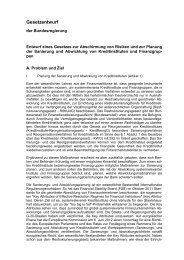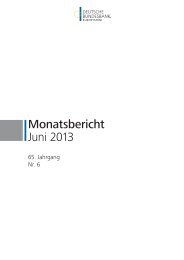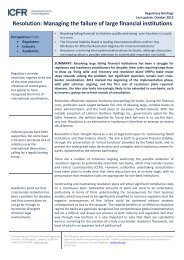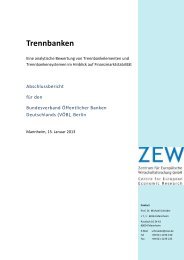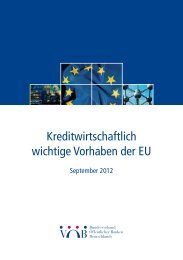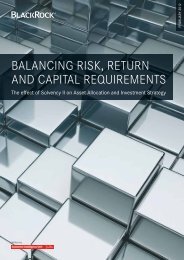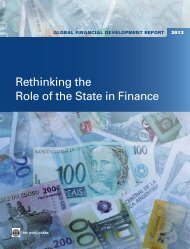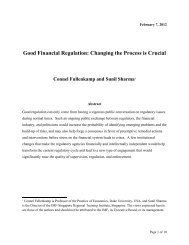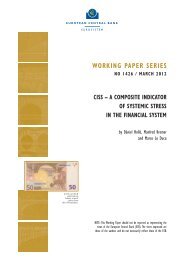3 Issuing costs of state guaranteed bonds - Financial Risk and ...
3 Issuing costs of state guaranteed bonds - Financial Risk and ...
3 Issuing costs of state guaranteed bonds - Financial Risk and ...
Create successful ePaper yourself
Turn your PDF publications into a flip-book with our unique Google optimized e-Paper software.
Annex 3 Analysis <strong>of</strong> missing issuing cost data<br />
Table 34-Table 36 show the results <strong>of</strong> mean-comparison tests <strong>and</strong> tests <strong>of</strong> proportions <strong>of</strong> the<br />
characteristics <strong>of</strong> included <strong>and</strong> excluded <strong>bonds</strong>, by month<br />
The rationale for these comparisons was to formally investigate differences in included <strong>and</strong><br />
excluded bond characteristics to determine whether they may have influenced the main findings<br />
<strong>of</strong> the study in relation to issuing cost.<br />
The statistical tests are conducted on a monthly basis because the main empirical specification<br />
includes time dummies, which account for inter-month variation, <strong>and</strong> therefore we are interested<br />
in unaccounted for intra-month variation between included <strong>and</strong> excluded <strong>bonds</strong>.<br />
The tables display number <strong>of</strong> observations (N1, N2 121-2),<br />
the test statistic determining whether differences in means are statistically significant (t-stat/zstat)<br />
<strong>and</strong> the st<strong>and</strong>ard error used in the test (SE).<br />
The t-stat/z-stat column <strong>of</strong> the summary row provides the main output <strong>of</strong> this analysis. It indicates<br />
the number <strong>of</strong> months in which the characteristic <strong>of</strong> included <strong>and</strong> excluded <strong>bonds</strong> are different at<br />
a statistically significant level.<br />
The main finding is that included <strong>and</strong> excluded bond characteristics are similar in the vast majority<br />
<strong>of</strong> months. In terms <strong>of</strong> issuance volume, bond <strong>and</strong> time to maturity, <strong>bonds</strong> are different in only a<br />
minority <strong>of</strong> months (at most, four out <strong>of</strong> 26).<br />
The only way in which included <strong>and</strong> excluded <strong>bonds</strong> are different is in terms <strong>of</strong> interest rate type.<br />
This was seen above, where 78% <strong>of</strong> included <strong>bonds</strong> had a variable interest rate, whereas this was<br />
only the case for 28% <strong>of</strong> excluded <strong>bonds</strong>. The remainder <strong>of</strong> <strong>bonds</strong> had either a fixed, floating or<br />
other interest rate. This finding is corroborated below, as included <strong>and</strong> excluded <strong>bonds</strong> differ in 20<br />
out <strong>of</strong> the 26 months for which the two proportions were compared.<br />
143



